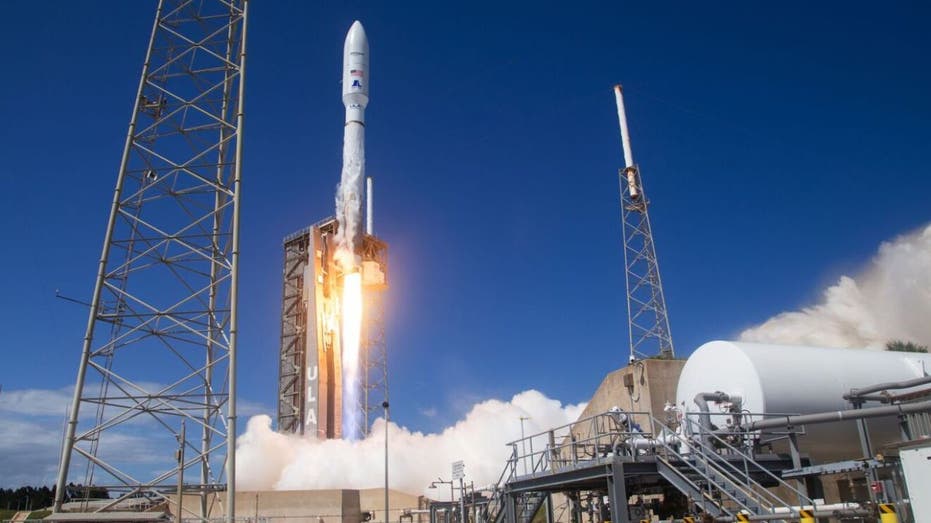Amazon Challenges SpaceX with the Launch of 27 Internet Satellites

Bridging the Digital Divide: Amazon’s Vision
Imagine a world where internet access is available everywhere, from bustling cities to the most remote regions. While reliable internet is a daily necessity for many, millions still consider it a luxury. Recognizing this gap, Amazon’s Project Kuiper aims to change the narrative by providing fast, affordable internet to underserved communities globally.
The Launch of KA-01: A Milestone for Project Kuiper
On April 28, 2025, Amazon reached a significant milestone by successfully launching its first full batch of satellites, known as the KA-01 mission (Kuiper Atlas 1). This launch signifies the transition of Project Kuiper from its initial prototype phase to full-scale deployment, marking a new era in global internet connectivity.
Technological Advancements in Satellite Design
The KA-01 mission deployed 27 cutting-edge satellites into low Earth orbit at an altitude of 280 miles (450 kilometers). Each satellite is equipped with advanced technology, including:
– **Phased Array Antennas:** For high-speed data transmission.
– **Advanced Processors:** To enhance processing capabilities.
– **Electric Propulsion Systems:** For precise orbit adjustments.
– **Optical Inter-Satellite Links:** Enabling seamless communication between satellites.
In a thoughtful nod to environmental concerns, the satellites feature a unique dielectric mirror coating that scatters sunlight, reducing their visibility from Earth and addressing astronomers’ worries about light pollution.
Launch Mechanics: The Role of United Launch Alliance
To execute this historic mission, United Launch Alliance (ULA) employed its Atlas V rocket in its most powerful configuration. The KA-01 payload was the heaviest ever launched by an Atlas V rocket, supported by five solid rocket boosters and a massive payload fairing measuring 77 feet in height and 16.4 feet in width.
Following the successful launch from Cape Canaveral Space Force Station in Florida, control of the satellites was transferred to Project Kuiper’s mission operations center in Redmond, Washington. Each satellite underwent automated procedures to activate onboard systems and began using electric propulsion to ascend to its final operational altitude of 392 miles.
Establishing Global Connectivity
The primary goal of the KA-01 mission was to create end-to-end network connectivity. This involves transmitting data from ground stations to satellites and back to customer antennas, which will ultimately provide high-speed internet service to even the most isolated locations on Earth.
Looking Ahead: The Future of Project Kuiper
The successful KA-01 mission is just the beginning. Amazon has secured over 80 additional launches across multiple providers to deploy more than 3,200 satellites as part of its first-generation constellation. The next mission, KA-02, is already in the pipeline, with another ULA Atlas V rocket launch planned.
By scaling advanced satellite technology, Project Kuiper aims to make reliable internet access a reality for millions of individuals, transforming lives and communities worldwide.
Competing in the Satellite Internet Race
Amazon’s Project Kuiper and SpaceX’s Starlink are both at the forefront of the satellite internet revolution, striving to provide high-speed connectivity to underserved areas. While both systems utilize low Earth orbit satellites to minimize latency, there are notable differences:
– **Starlink:** With over 7,000 satellites currently in orbit and plans for a constellation of up to 42,000, Starlink leads in deployment. Its satellites orbit at approximately 248 miles, providing lower latency but requiring more satellites for global coverage.
– **Project Kuiper:** Plans to deploy over 3,200 satellites that will orbit at a higher altitude of 311 miles. This altitude allows for broader coverage but leads to a 40% reduction in signal strength compared to Starlink. To mitigate this, Kuiper’s satellites will feature larger antennas to ensure effective performance.
Pricing and Service Plans: What to Expect
Starlink offers service speed ranging from 50 Mbps to 250 Mbps for standard plans, with premium users potentially reaching up to 1 Gbps. Its pricing includes a standard receiver cost of $599 and a high-performance model priced at $2,500, with monthly service costs between $80 and $120.
In contrast, Amazon’s standard receiver for Project Kuiper is projected to cost less than $400 to produce, suggesting a more budget-friendly option for consumers. Service pricing details are yet to be announced, but Amazon’s efficient production model hints at competitive rates.
Conclusion: The Road Ahead
While it is still early in the development of Project Kuiper, the successful launch of its first satellite batch underscores Amazon’s commitment to closing the connectivity gap. With the competition heating up against Starlink, Kuiper’s innovative approach could lead to millions more having access to fast and affordable internet, regardless of their location.
Are you excited about the possibility of global internet access from space, or do you have reservations? Share your thoughts with us at Cyberguy.com/Contact.
For more tech tips and updates, subscribe to the CyberGuy Report Newsletter at Cyberguy.com/Newsletter. Stay informed and connected!
Copyright 2025 CyberGuy.com. All rights reserved.